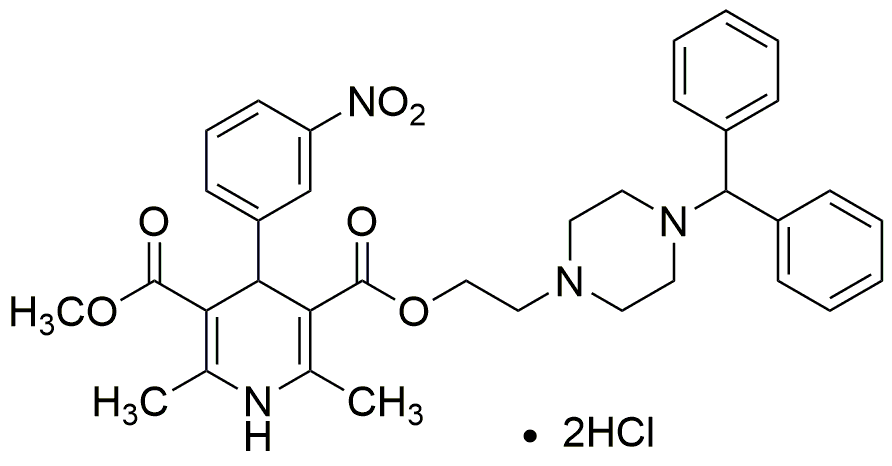Manidipine dihydrochloride is widely utilized in research focused on:
- Hypertension Treatment: This compound is primarily used in the pharmaceutical industry for managing high blood pressure, providing effective vasodilation and reducing cardiovascular risks.
- Cardiovascular Research: Researchers often explore its effects on heart health, studying its mechanisms to improve blood flow and reduce strain on the heart.
- Combination Therapies: It is frequently combined with other antihypertensive agents to enhance therapeutic efficacy, allowing for lower doses and reduced side effects.
- Drug Development: In the field of medicinal chemistry, it serves as a model compound for developing new antihypertensive medications, guiding the design of more effective and safer drugs.
- Clinical Trials: Manidipine dihydrochloride is often involved in clinical studies to assess its long-term effects and benefits, contributing valuable data to the medical community.
General Information
Properties
Safety and Regulations
Applications
Manidipine dihydrochloride is widely utilized in research focused on:
- Hypertension Treatment: This compound is primarily used in the pharmaceutical industry for managing high blood pressure, providing effective vasodilation and reducing cardiovascular risks.
- Cardiovascular Research: Researchers often explore its effects on heart health, studying its mechanisms to improve blood flow and reduce strain on the heart.
- Combination Therapies: It is frequently combined with other antihypertensive agents to enhance therapeutic efficacy, allowing for lower doses and reduced side effects.
- Drug Development: In the field of medicinal chemistry, it serves as a model compound for developing new antihypertensive medications, guiding the design of more effective and safer drugs.
- Clinical Trials: Manidipine dihydrochloride is often involved in clinical studies to assess its long-term effects and benefits, contributing valuable data to the medical community.
Documents
Safety Data Sheets (SDS)
The SDS provides comprehensive safety information on handling, storage, and disposal of the product.
Product Specification (PS)
The PS provides a comprehensive breakdown of the product’s properties, including chemical composition, physical state, purity, and storage requirements. It also details acceptable quality ranges and the product's intended applications.
Certificates of Analysis (COA)
Search for Certificates of Analysis (COA) by entering the products Lot Number. Lot and Batch Numbers can be found on a product’s label following the words ‘Lot’ or ‘Batch’.
*Catalog Number
*Lot Number
Certificates Of Origin (COO)
This COO confirms the country where the product was manufactured, and also details the materials and components used in it and whether it is derived from natural, synthetic, or other specific sources. This certificate may be required for customs, trade, and regulatory compliance.
*Catalog Number
*Lot Number
Safety Data Sheets (SDS)
The SDS provides comprehensive safety information on handling, storage, and disposal of the product.
DownloadProduct Specification (PS)
The PS provides a comprehensive breakdown of the product’s properties, including chemical composition, physical state, purity, and storage requirements. It also details acceptable quality ranges and the product's intended applications.
DownloadCertificates of Analysis (COA)
Search for Certificates of Analysis (COA) by entering the products Lot Number. Lot and Batch Numbers can be found on a product’s label following the words ‘Lot’ or ‘Batch’.
*Catalog Number
*Lot Number
Certificates Of Origin (COO)
This COO confirms the country where the product was manufactured, and also details the materials and components used in it and whether it is derived from natural, synthetic, or other specific sources. This certificate may be required for customs, trade, and regulatory compliance.


